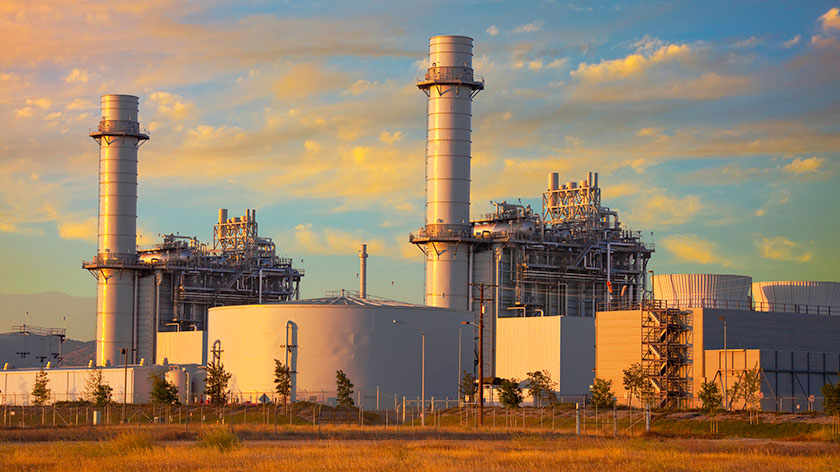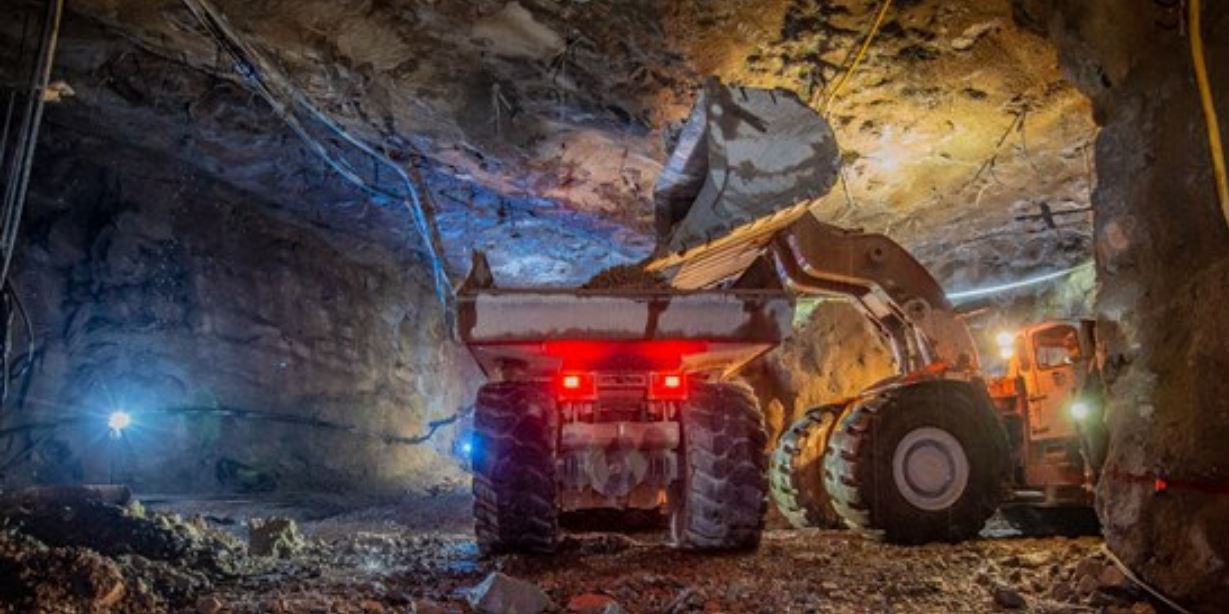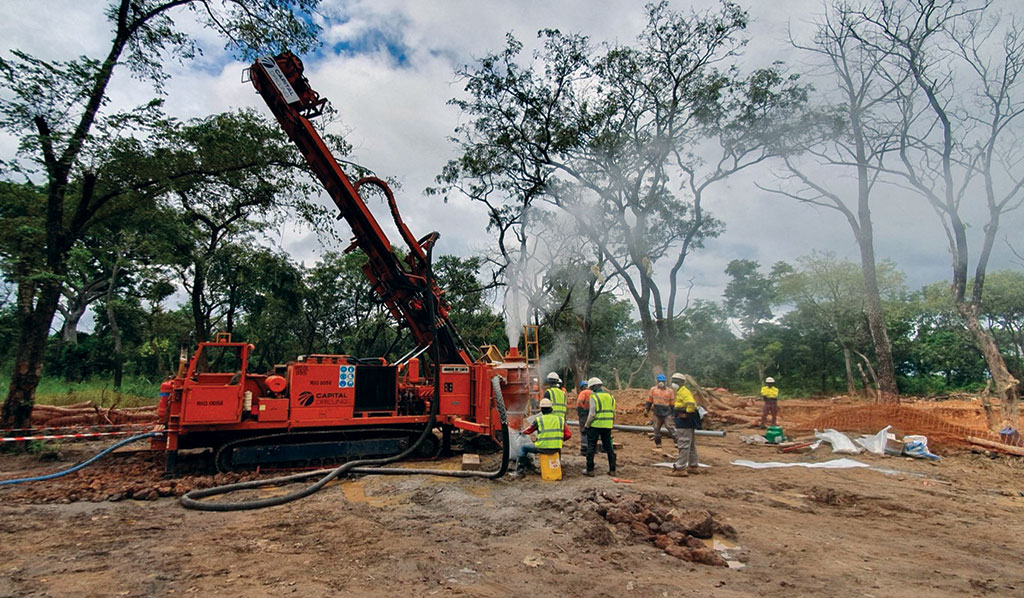The role of gas in powering Africa’s future

It is well-known that Sub-Saharan Africa suffers from a lack of access to electricity. At the same time,
there are 22 African countries with proven gas reserves. This suggests that gas should play an increasing
role in meeting Sub-Saharan Africa’s demand for power: but is it that straightforward? Sub-Saharan Africa is, of course, a very large and diverse region made up of countries that have different natural resources, policies and challenges.
There are 13 countries in Sub-Saharan Africa currently consuming gas for power generation.1 Ten of those countries generate power from their own domestic gas production,2 two rely on pipeline imports (Togo and Benin) and one uses a combination of domestic supply and pipeline imports (Ghana). At the moment there are no LNG imports in the region, but that could soon change.
Prospects for gas-fired power generation in countries with domestic gas reserves
There is an opportunity to expand gas-fired power generation from domestic gas production in Sub-Saharan Africa. The demand will arise not only from the need for more power in Sub-Saharan Africa, but also from the opportunity to displace oil-fired power generation with cheaper and cleaner gas. Angola, Ghana, Cameroon, Senegal and Tanzania are all examples of countries with significant gas reserves currently using oil to generate power.
Until recently, Angola was an outlier among gas producing states in Sub-Saharan Africa as it had no gas-fired power generation. In 2017 the Soyo combined–cycle natural gas turbine plant introduced 750 MW of newly installed capacity (using a connecting pipeline from Angola LNG to the power plant). In the short to medium term that project will consume a large part of currently available domestic gas resources. Further expansion in gas-fired power generation in Angola is likely to require the development of additional domestic gas resources or LNG imports.
In Ghana, gas is already a central part of the power generation mix (accounting for nearly 40% of power generation)3 and its role is likely to increase as oil is displaced. Anticipated demand for gas-fired power generation is such that increasing domestic gas production, pipeline imports and LNG imports may all be required. In Cameroon, Victoria Oil & Gas PLC, through its subsidiary Gaz du Cameroun (GDC), is the sole supplier of domestic gas for power generation. The government has said it requires additional grid power to meet growing demand.
In July 2019, GDC agreed commercial terms to supply gas to a proposed new 150 MW gas-fired power station, a project we are advising on, and there is likely to be scope for further growth in the country. In Tanzania, material expansion of gas-fired power generation capacity is likely to be contingent on a positive final investment decision or its proposed LNG export plant, which seems some way off. Equinor has disclosed that its production sharing agreement would allow for 10% of gas to go to the domestic market.
In Senegal, BP took a positive final investment decision on the Tortue-Ahmeyim gas development project in December 2018. A construction contract has been awarded for a floating production storage and offloading (FPSO) unit to be used alongside a floating LNG facility (a converted LNG carrier) being provided by Golar LNG. As part of that development, a pipeline to supply natural gas to both Senegal and Mauritania is planned. There have also been recent moves to expand gas-fired power generation in Mozambique: a 400 MW gas-fired power project is being developed at Temane in Inhambane province.
The plant will use gas supplied from the Pande-Temane fields. Given the recent positive final investment decision on the Area 1 LNG project in Mozambique, and the probable final investment decision Area 4 LNG project in the coming months, there could be scope for significant further expansion of gas-to-power in the country. One of the challenges is that the planned onshore LNG facilities are 2,500 km from the country’s capital and largest city, Maputo.
In May 2018 Great Lakes Africa Energy (GLAE) announced that it had signed a memorandum of understanding with the Mozambique government to build and operate a 250 MW gas-powered plant at Nacala District in the north of the country using gas from the Rovuma basin, but even that project will require gas to be transported approximately 600 km. GLAE has said it believes that mini-LNG might offer a solution.
Nigeria does not use oil for power generation. There is, however, enormous unfulfilled demand for power domestically and gas is central to plans for expansion of the country’s power sector. That expansion has been constrained by structural problems and a chain of debt (from gas sellers to power generation companies to the Nigerian Bulk Energy Trading Company to distribution companies to end customers) not helped by the manner of the privatization of the Power Holding Company of Nigeria in November 2013.
The transmission system and gas supply network infrastructure also requires significant investment and reliability of gas supply will also need to be improved to allow a major expansion in installed capacity.
Prospects for new cross-border pipelines in Sub-Saharan Africa
The only operational cross-bordergas pipelines in Sub-Saharan Africaare the 678 km West African GasPipeline (which takes gas fromthe Escravos-Lagos pipeline at theNigeria Gas Company’s Itoki NaturalGas Export Terminal to Benin,Togo and Ghana) and the 865 kmROMPCO Mozambique to Secundapipeline (which takes gas from theonshore Pande and Temane fields inMozambique to Sasol’s operationsin South Africa).
In 2009 Nigeria signed an intergovernmental agreement with Niger and Algeria forthe development of the 4,400 km Trans-Sahara Gas Pipeline (1,037 km in Nigeria, 853 km in Niger, 2,310 km in Algeria and 220 km connecting Algeria to Spain). The Nigerian National Petroleum Corporation (NNPC) currently describes that project as “under consideration”.
The Nigeria Gas Company, an NNPC subsidiary, is proceeding with the project to develop the 614 km Ajaokuta-Kaduna-Kano (AKK) pipeline, the first stage of the Trans-Nigeria Gas Pipeline project which is intended to form part of the Trans-Sahara Gas Pipeline system if it proceeds. We are currently advising on the AKK project. The ROMPCO pipeline primarily supplies the PetroSA gas-to-liquids (GTL) refinery at Mossel Bay on South Africa’s southern coast (which was commissioned in 1992 as the world’s first GTL refinery).
Currently there is no gas-fired power generation in South Africa and, if that is to change, it appears more likely that gas-fired power plants would be supplied by imported LNG (import terminals have been proposed at Richards Bay and Port Coega). It is possible that pipeline exports from Mozambique to South Africa could eventually increase with the development of the Rovuma basin reserves, but this is not currently part of the development plan for either the Area 1 or Area 4 project.
The Tanzania Petroleum Development Corporation has mooted supplying natural gas to Uganda and Kenya from the Tanzanian Rovuma basin reserves. As with the expansion of gas-fired power generation in Tanzania, the development of that project will require the LNG export project to proceed, and even then the commercial viability of a gas pipeline project from southern Tanzania is uncertain.
Even where there is the political will, new cross-border pipeline projects are only likely to be developed if they can be commercially justified as a way to monetize gas reserves. In the absence of equity participation from stakeholders in upstream gas projects, governments will face an uphill battle to fund the necessary equity contribution for a new pipeline project.
Could power generated from gas be exported to regional markets?
There are four existing power pools in Sub-Saharan Africa, within which countries have interconnected power systems: the Southern African Power Pool (SAPP), the East African Power Pool (EAPP), the West African Power Pool (WAPP) and the Central African Power Pool (CAPP). In order to expand gas-by-wire imports, transmission and distribution infrastructure will require significant development to improve capacity and efficiency.
In the medium-term, expansion of gas-by-wire seems most likely in West Africa, where land-locked countries or coastal countries with relatively small markets could take advantage of upstream gas projects (or even LNG import projects) in neighboring countries.
Prospects for LNG import projects in Sub-Saharan Africa
A number of members of the WAPP have proposed LNG import projects, perhaps reasoning that any shortfall in domestic demand for power generated from gas could be exported around the power pool. Ghana seems closest to realizing this goal, having granted a concession to Tema LNG Terminal Company Limited (Tema LNG), a joint venture between Helios Investment Partners and the Ghana National Petroleum Company (GNPC), to construct an LNG import terminal. Tema LNG has entered into a construction contract with China Harbour Engineering Company to build onshore facilities and Jiangnan Shipyard for a floating storage and regasification unit (FSRU).
LNG is reportedly to be supplied by Rosneftto GNPC under a 12-year supply agreement. When the construction contracts were announced in September 2018 it was said that the FSRU will be ready in 18 months, meaning first LNG imports could come as early as March 2020. One of the challenges for LNG import projects is scale.
The Ghanaian government has said that the import terminal at Tema will supply 30% of Ghana’s power generation capacity,8 a very large part of the feedstock requirement for a country that has significant gas reserves of its own, with the Sankofa field now supplying gas for 1,000 MW of power generation capacity (a project we know well having advised the lenders on a USD500 million letter of credit facility made available to the Ghana National Petroleum Corporation to support its role in the development of the Sankofa field). Technological developments in small-scale LNG may, in time, reduce the minimum volume requirements and open up a wider range of markets.
In July 2019 Total announced10 an agreement to develop and operate an FSRU located offshore Benin together with a pipeline to supply existing and planned gas-fired power plants, although it remains to be seen how quickly that project will proceed. In November 2016 a consortium led by Total announced that it had been granted rights to construct an FSRU in Cote d’Ivoire11 together with pipeline connecting the FSRU to existing and planned power plants in Abidjan but no final investment decision has yet been announced.
South Africa continues to explore options for a LNG imports12 and an LNG terminal has also been proposed at Walvis Bay in Namibia. Other LNG import projects in the region have either previously been considered and put on hold (such as in Kenya)14 or are currently under consideration (such as in Mauritius and the Seychelles). Given that a delivered gas price of around USD8/MMBtu is competitive with oil-fired power at an oil price as low as USD50/barrel;17 it is more than possible that the economics will support LNG imports to displace oil-fired power generation and to increase power generation capacity in Sub-Saharan Africa, particularly where funding can be obtained from multilateral lending agencies or development finance institutions.
Although the World Bank has announced that it will no longer finance upstream oil and gas projects (apart from in “exceptional circumstances”), it is expected to continue to finance midstream and downstream natural gas projects.
There are challenges to gas-to-power projects in Sub-Saharan Africa, such as the poor records on collection of power sector revenues in many countries, related problems of creditworthiness of the state utilities who are the natural customers for gas-to-power projects and under investment in electricity distribution infrastructure, but those challenges can be overcome and are present whatever the means of generating electricity.
In countries with domestic reserves, gas can undoubtedly play a major role in the development of power generation capacity. LNG import projects are also foreseeable as countries seek to move away from oil as a power generation fuel. New cross-border gas pipelines may be less likely, but LNG imports or increases in domestic production could well result in an increase in gas-by-wire exports, particularly to land-locked countries in the WAPP.
Source: DLA Piper Africa Connected Issue 3: Energy in Africa – Innovation, Investment and Risk
More News
{{ commodity.name }}
{{ post.title }}
{{ post.date }}



Comments